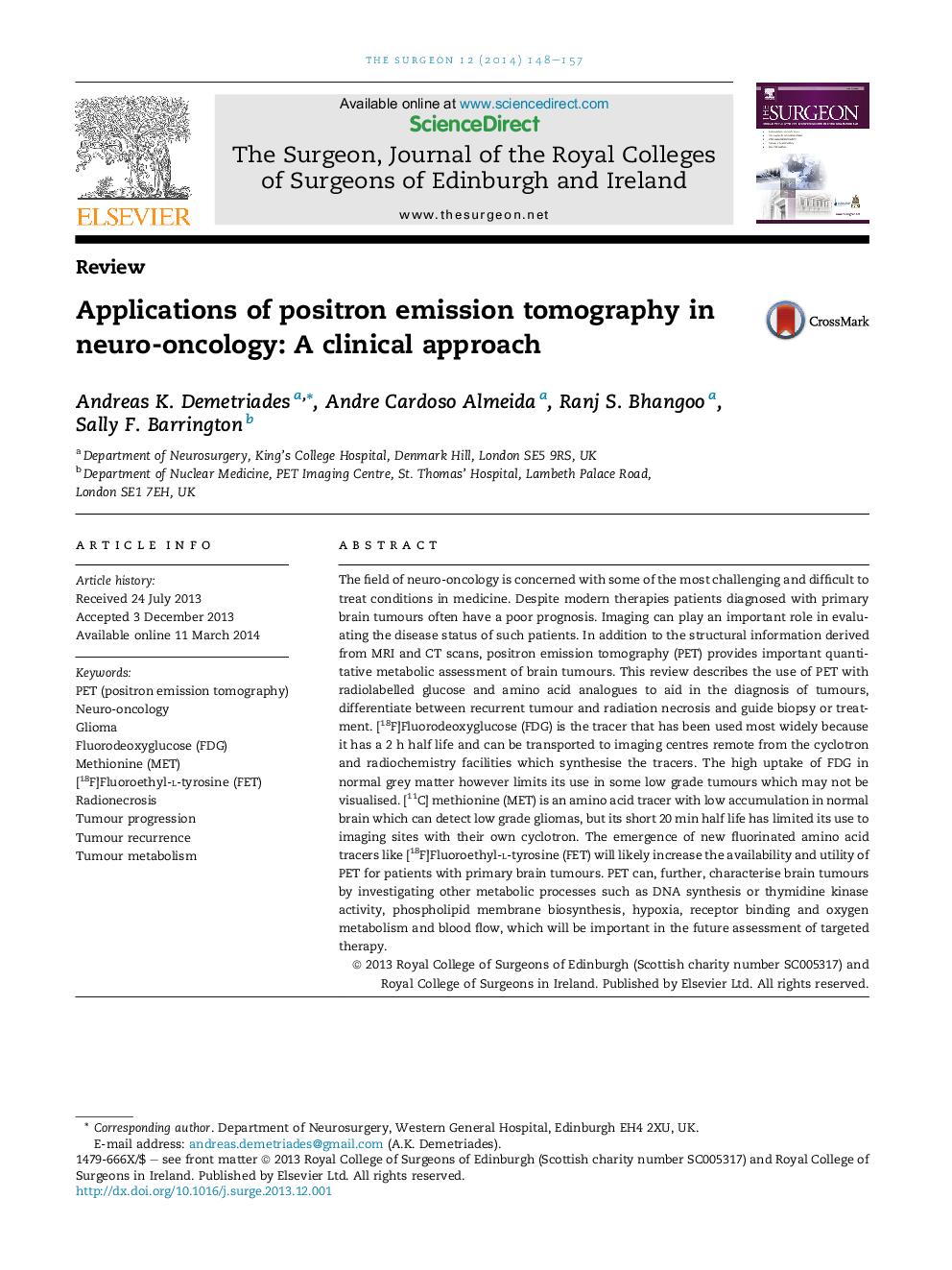| کد مقاله | کد نشریه | سال انتشار | مقاله انگلیسی | نسخه تمام متن |
|---|---|---|---|---|
| 3178521 | 1200389 | 2014 | 10 صفحه PDF | دانلود رایگان |
The field of neuro-oncology is concerned with some of the most challenging and difficult to treat conditions in medicine. Despite modern therapies patients diagnosed with primary brain tumours often have a poor prognosis. Imaging can play an important role in evaluating the disease status of such patients. In addition to the structural information derived from MRI and CT scans, positron emission tomography (PET) provides important quantitative metabolic assessment of brain tumours. This review describes the use of PET with radiolabelled glucose and amino acid analogues to aid in the diagnosis of tumours, differentiate between recurrent tumour and radiation necrosis and guide biopsy or treatment. [18F]Fluorodeoxyglucose (FDG) is the tracer that has been used most widely because it has a 2 h half life and can be transported to imaging centres remote from the cyclotron and radiochemistry facilities which synthesise the tracers. The high uptake of FDG in normal grey matter however limits its use in some low grade tumours which may not be visualised. [11C] methionine (MET) is an amino acid tracer with low accumulation in normal brain which can detect low grade gliomas, but its short 20 min half life has limited its use to imaging sites with their own cyclotron. The emergence of new fluorinated amino acid tracers like [18F]Fluoroethyl-l-tyrosine (FET) will likely increase the availability and utility of PET for patients with primary brain tumours. PET can, further, characterise brain tumours by investigating other metabolic processes such as DNA synthesis or thymidine kinase activity, phospholipid membrane biosynthesis, hypoxia, receptor binding and oxygen metabolism and blood flow, which will be important in the future assessment of targeted therapy.
Journal: The Surgeon - Volume 12, Issue 3, June 2014, Pages 148–157
